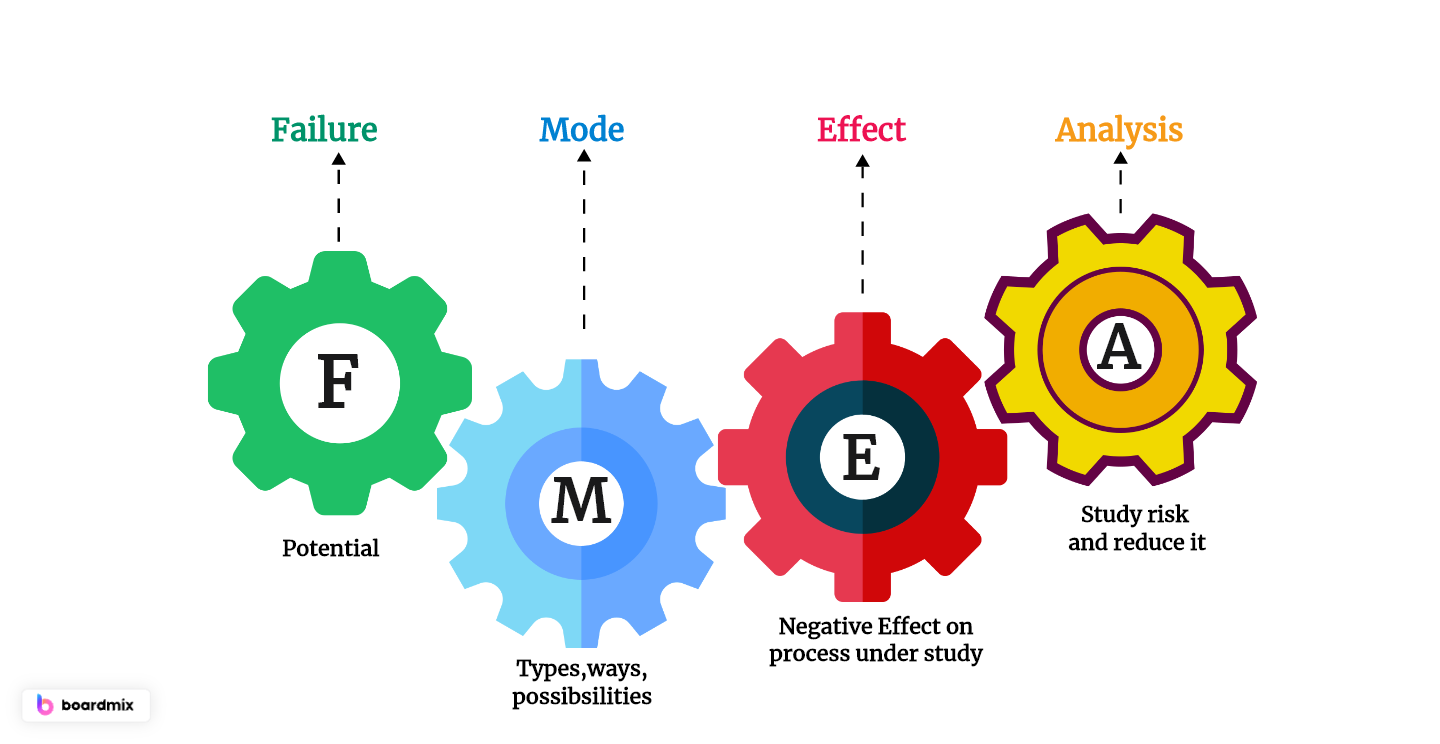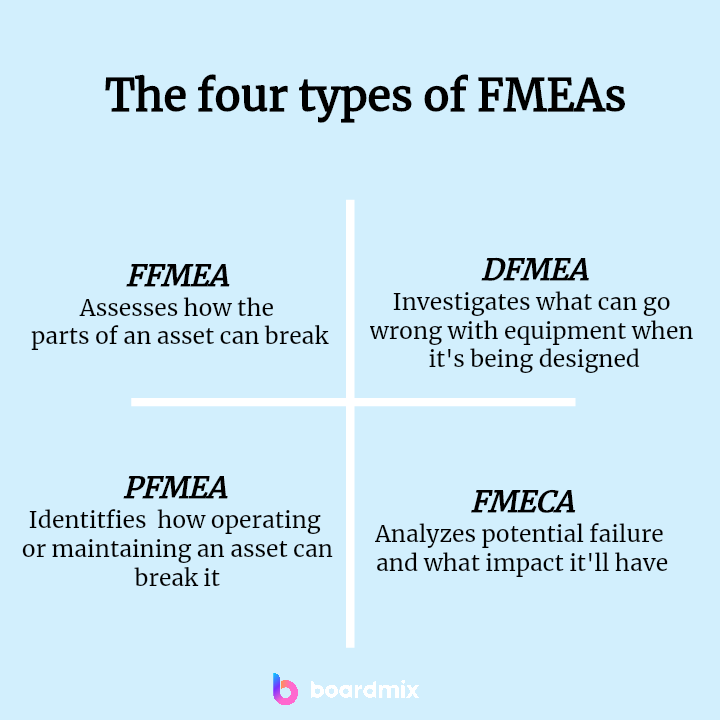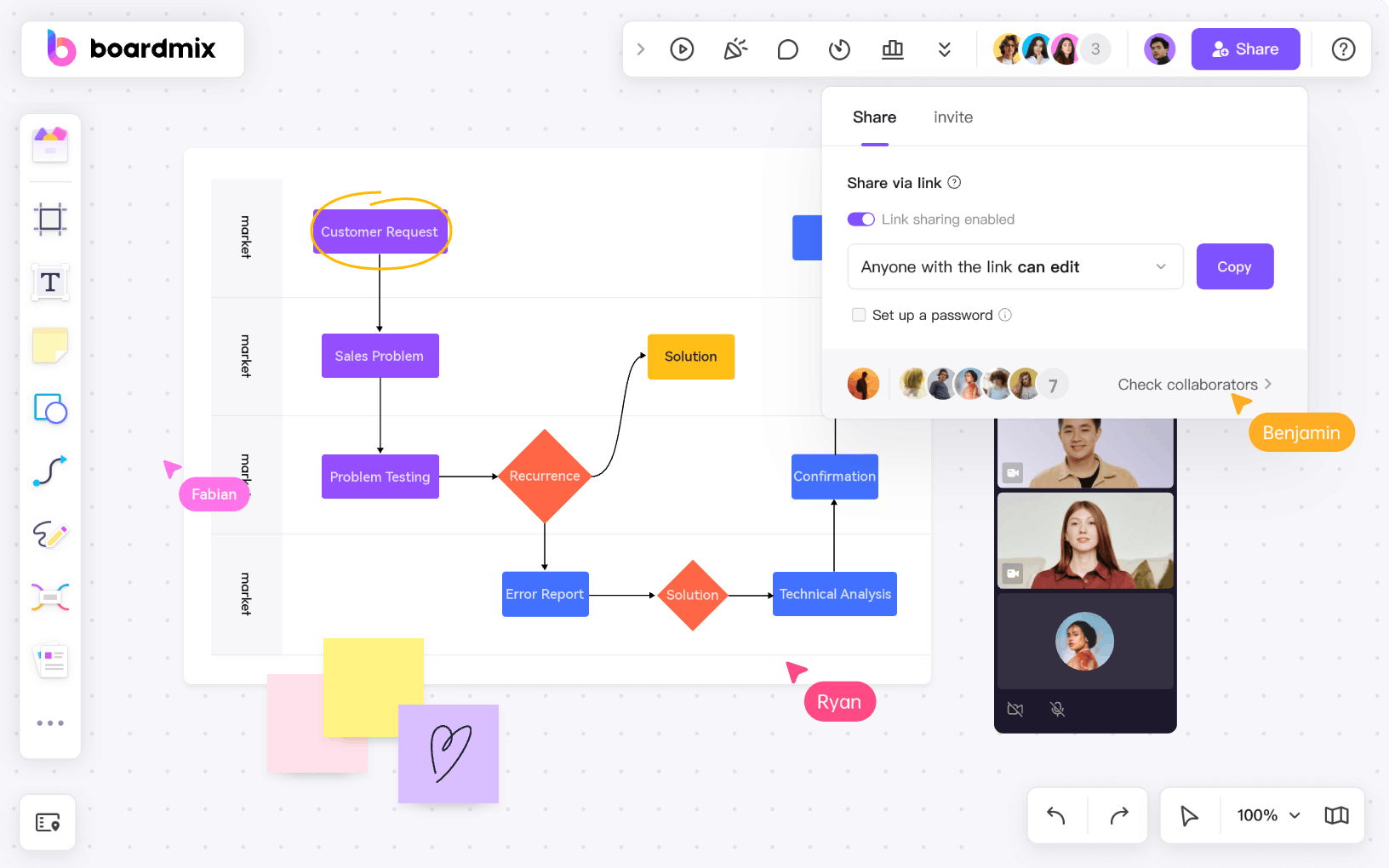Failure Mode and Effect Analysis (FMEA) is a structured and systematic approach to identifying and prioritizing potential failure modes in a process, product, or system. Developed in the 1940s by the U.S. military, FMEA has since found widespread application across various industries, including manufacturing, healthcare, and information technology. This article provides an in-depth exploration of FMEA analysis, its key components, and its significance in enhancing overall system reliability and performance.
Part 1. What is FMEA?
FMEA is a proactive risk management technique that aims to anticipate and prevent potential failures before they occur. It involves a collaborative effort among cross-functional teams to systematically evaluate and analyze failure modes, their causes, and their effects. The ultimate goal is to prioritize the identified risks and implement corrective actions to mitigate or eliminate them.

Part 2. What Are the 7 Steps of FMEA?
Failure Mode and Effect Analysis (FMEA) is a systematic method for evaluating processes to identify where and how they might fail and to assess the relative impact of different failures. The seven steps of FMEA are as follows:

Step 1. Define the Scope: Clearly define the scope of the analysis, including the process or system being analyzed, the boundaries, and the objectives of the FMEA.
Step 2. Assemble the Team: Form a multidisciplinary team with members who have knowledge about the process or system under consideration. This team should include individuals with expertise in different areas relevant to the analysis.
Step 3. Identify Potential Failure Modes: Brainstorm and list all possible failure modes for each component of the system or process. A failure mode is a way in which a component or process could potentially fail to meet its intended function.
Step 4. Identify Potential Effects of Failure: For each identified failure mode, determine the potential effects or consequences on the overall system or process. Consider both immediate and downstream effects.
Step 5. Assign Severity Ratings: Evaluate and assign a severity rating to each potential effect. Severity ratings indicate the seriousness of the consequences if a particular failure were to occur. Ratings are usually on a scale from 1 to 10, with 1 being the least severe and 10 being the most severe.
Step 6. Assign Occurrence Ratings: Assess the likelihood or probability of each failure mode occurring. Assign occurrence ratings on a scale from 1 to 10, with 1 being the least likely and 10 being the most likely.
Step 7. Assign Detection Ratings: Evaluate the likelihood of detecting each failure mode before it reaches the end-user. Assign detection ratings on a scale from 1 to 10, with 1 being the most detectable and 10 being the least detectable.
After completing these steps, a Risk Priority Number (RPN) can be calculated for each potential failure mode by multiplying the severity, occurrence, and detection ratings. The RPN helps prioritize which failure modes to address first. The team can then develop and implement corrective actions to reduce the risk associated with high-priority failure modes.
Part 3. What Are the 4 Key Forms of FMEA?
Failure Mode and Effect Analysis (FMEA) can be applied in various contexts, and there are different forms or types of FMEA tailored to specific areas. Here are four key forms of FMEA:

1. Design FMEA (DFMEA):
Focus: Primarily used during the design phase of a product or system.
Purpose: Identifies potential failures in the design of a product or system and evaluates their impact on the overall functionality and customer satisfaction.
Participants: Involves design engineers, product development teams, and other relevant stakeholders.
2. Process FMEA (PFMEA):
Focus: Applied to manufacturing and assembly processes.
Purpose: Identifies potential failures in the manufacturing or assembly processes that could lead to defects in the final product. It assesses the impact of these failures on product quality and customer satisfaction.
Participants: Involves manufacturing engineers, process engineers, and production teams.
3. System FMEA (SFMEA):
Focus: Examines the overall system, often integrating both design and process aspects.
Purpose: Evaluates potential failures at the system level, considering interactions between various components and processes. It aims to ensure the reliability and performance of the entire system.
Participants: Cross-functional teams that include both design and process experts.
4. Software FMEA (SW-FMEA):
Focus: Specifically applied to software development processes.
Purpose: Identifies potential failures in software design, development, and implementation. It assesses the impact of software failures on overall system performance and user experience.
Participants: Software engineers, developers, and quality assurance professionals.
These different forms of FMEA share the common goal of systematically identifying and mitigating potential failures, but they are tailored to specific phases of a product or system lifecycle. The choice of which form to use depends on the context and the goals of the analysis. In some cases, organizations may also use a combined approach, applying multiple forms of FMEA to comprehensively address potential risks across the entire system or product development process.
Part 4. Why Perform FMEA?
Performing Failure Mode and Effect Analysis (FMEA) is crucial for proactive risk management. It helps identify, prioritize, and mitigate potential failures in processes or systems, ultimately enhancing reliability, efficiency, and overall product or service quality. FMEA is a proactive approach that allows organizations to address potential issues before they impact customers, leading to improved customer satisfaction and reduced costs associated with rework and warranty claims.
Part 5. When to Perform FMEA?
Failure Mode and Effect Analysis (FMEA) should be performed at various stages of a project or process to proactively manage risks. Here are key points when to conduct FMEA:
1. During Design and Development: Identify potential failure modes and their causes early in the design phase to prevent issues before they become costly to address.
2. Before Production or Implementation: Conduct FMEA before starting production or implementing a new process to catch and mitigate potential failures, ensuring a smoother and more reliable execution.
3. When Introducing New Technologies: Before adopting new technologies, perform FMEA to understand potential failure modes associated with their integration and operation.
4. In Response to Issues or Failures: If unexpected issues or failures occur, use FMEA as a tool to analyze and address root causes, preventing similar problems in the future.
5. Periodically Throughout the Product Lifecycle: Regularly review and update FMEA throughout the product or process lifecycle, especially when changes occur, to maintain proactive risk management.
Part 6. Streamline the FMEA Process with Boardmix
Boardmix, an innovative online whiteboard tool, is designed to streamline your FMEA (Failure Modes and Effects Analysis) process. With our intuitive interface and extensive library of drawing templates, you can easily map out potential failure modes, their effects on the system, and the causes behind them. Boardmix allows for real-time collaboration, enabling teams to work together seamlessly no matter where they are located. Unlike traditional methods that can be time-consuming and complex, using Boardmix for your FMEA analysis ensures a more efficient and effective approach. This not only saves time but also improves the accuracy of your analysis by providing a clear visual representation of potential failures and their impacts.

How to Use Boardmix to Conduct FMEA
Step 1. Create a New Board: Log into your Boardmix account and create a new board. Choose an FMEA template from our extensive library or start from scratch.

Step 2. Identify Potential Failures: Use the drawing tools to map out potential failure modes in your system or process. You can add text, shapes, lines, and more to represent different elements.

Step 3. Analyze Effects and Causes: For each failure mode, identify its potential effects on the system and the causes behind it. You can use different colors or symbols to represent these.

Step 4. Collaborate with Your Team: Invite your team members to join the board. They can add their inputs in real-time, making the process collaborative and efficient.

Step 5. Review and Update: Regularly review your FMEA analysis and update it as necessary based on new information or changes in the system.
FAQs about FMEA
1. What is FMEA formula?
The Failure Mode and Effect Analysis (FMEA) uses a formula to calculate the Risk Priority Number (RPN), which is a numerical assessment of the risk associated with a specific failure mode. The RPN is calculated using the following formula:
RPN=Severity×Occurrence×Detection
Where:
Severity (S): A measure of the seriousness of the consequence of a failure mode. It is typically rated on a scale from 1 to 10, with 10 being the most severe.
Occurrence (O): A measure of the likelihood or frequency of occurrence of a failure mode. It is typically rated on a scale from 1 to 10, with 10 being the most likely.
Detection (D): A measure of the likelihood that a failure mode will be detected before reaching the customer. It is typically rated on a scale from 1 to 10, with 10 being the least detectable.
2. Is FMEA a Six Sigma tool?
Yes, Failure Mode and Effect Analysis (FMEA) is commonly used as a tool within the Six Sigma methodology. Six Sigma is a set of techniques and tools for process improvement and aims to reduce defects and improve process performance. FMEA fits well into the framework of Six Sigma by providing a systematic approach to identifying and mitigating potential failure modes in a process.
3. What are the 5 T's in FMEA?
In Failure Mode and Effect Analysis (FMEA), the 5 T's are a set of categories used to classify and analyze potential causes of failure modes. These categories help teams systematically identify and understand the root causes of failures. The 5 T's are: Task, Tools, Training, Tangibles, Team
Conclusion
FMEA analysis is a powerful tool for organizations seeking to enhance the reliability, quality, and efficiency of their products or processes. By systematically identifying and addressing potential failure modes, FMEA contributes to a culture of continuous improvement and proactive risk management, ultimately benefiting both the organization and its customers. Incorporating FMEA into regular business practices can pave the way for sustained success and competitiveness in today's dynamic and challenging business environment.
Experience a new level of efficiency and collaboration with Boardmix for your FMEA analysis. Our intuitive online whiteboard tool, equipped with a vast library of templates, simplifies the complex process of identifying potential failures and their impacts. Don't miss out on this opportunity to streamline your FMEA process - try Boardmix today!








